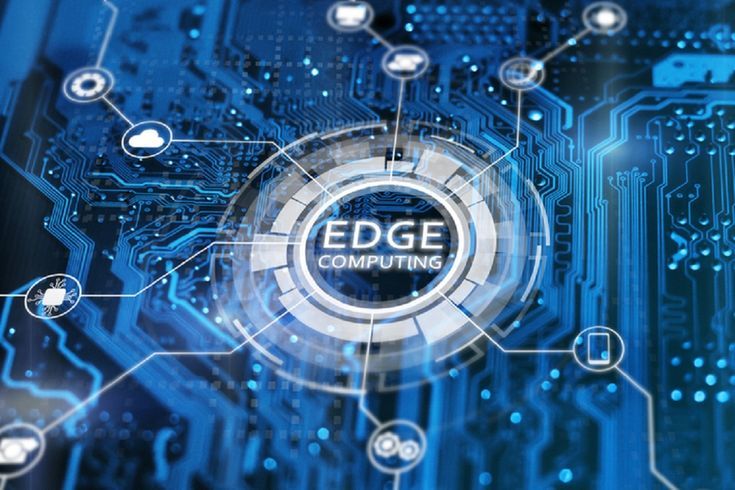
Introduction:
In today’s fast-paced digital world, businesses and individuals demand real-time solutions to manage data. This shift has paved the way for the rapid adoption of Edge Computing, a transformative technology that brings data processing closer to its source. By minimizing latency and maximizing efficiency, edge computing is revolutionizing industries such as healthcare, automotive, retail, and smart city development.
As organizations prepare for the exponential growth of IoT (Internet of Things) devices and 5G networks, edge computing is emerging as a critical enabler of the next wave of technological innovation.
What is Edge Computing?
Edge computing processes data locally, near the source of data generation, rather than relying solely on centralized cloud servers. This distributed approach ensures faster data processing, enhanced security, and reduced costs.
How Does It Work?
In traditional cloud computing, data travels long distances to centralized data centers for processing. Edge computing changes this paradigm by positioning edge devices (e.g., IoT sensors, gateways, or local servers) closer to the user or device, enabling quicker data analysis and response.
Key Features of Edge Computing:
Real-Time Processing: Immediate data analysis without delays.
Decentralized Infrastructure: Reduces reliance on centralized cloud systems.
Improved Reliability: Maintains functionality even in case of network disruptions.
Top Benefits of Edge Computing for Businesses
1.Reduced Latency:
Applications like autonomous vehicles, real-time video analytics, and AR/VR gaming require instant responses. By processing data locally, edge computing eliminates delays caused by transferring data to and from the cloud.
2.Enhanced Security:
Sensitive data processed at the edge is less vulnerable to breaches during transmission. Industries like healthcare and finance benefit from improved data privacy and compliance.
3.Cost Optimization:
Businesses save on bandwidth and cloud storage costs by reducing the amount of data sent to centralized servers.
4.Scalability for IoT:
With the explosion of IoT devices, edge computing ensures seamless scalability by managing data closer to its origin.
5.Localized Insights:
Edge computing allows businesses to gather and process location-specific insights, enabling better decision-making for smart cities, retail, and agriculture.
Industry Applications of Edge Computing in 2025
1. Smart Cities:
Edge computing is the backbone of smart city infrastructure, enabling real-time traffic management, efficient energy distribution, and enhanced public safety systems. Smart sensors analyze data locally to ensure smooth operations.
2. Healthcare:
From wearable devices to real-time patient monitoring, edge computing is revolutionizing healthcare. Medical devices process data instantly, providing critical information to doctors and reducing response times in emergencies.
3. Autonomous Vehicles:
Self-driving cars rely on edge computing to process data from cameras, sensors, and GPS in milliseconds. This ensures safe navigation and real-time decision-making on the road.
4. Retail and E-commerce:
Edge computing enables retailers to offer personalized shopping experiences through AI-driven customer analytics. Additionally, smart shelves and inventory management systems use edge computing to streamline operations.
5. Industrial IoT (IIoT):
Factories are deploying edge devices to monitor machinery, predict maintenance needs, and optimize production lines in real-time, ensuring higher efficiency and lower downtime.
6. Entertainment and Media:
Edge computing powers AR/VR applications, cloud gaming, and high-quality live streaming, providing users with seamless, immersive experiences.
Market Growth and Trends for Edge Computing
Edge Computing Market Overview:
The edge computing market is expected to grow to $80 billion by 2025, driven by advancements in IoT, 5G, and AI technologies. Businesses across industries are adopting edge computing to stay competitive and meet the demand for low-latency, high-efficiency solutions.
Emerging Trends:
5G and Edge Computing Integration:
The rollout of 5G networks is accelerating the adoption of edge computing, enabling ultra-fast data transfer for applications like autonomous drones, smart factories, and remote healthcare.
AI at the Edge:
With edge devices becoming smarter, AI-powered edge computing is gaining traction, enabling real-time decision-making in industries like agriculture, retail, and manufacturing.
Decentralized Cloud Models:
Hybrid cloud-edge systems are becoming the norm, ensuring seamless connectivity between centralized and decentralized data processing.
Top Players Driving Edge Computing Innovation
Several tech giants and startups are leading the edge computing revolution:
Amazon AWS IoT Greengrass: A platform for building edge applications that seamlessly integrate with AWS.
Microsoft Azure IoT Edge: A comprehensive solution for managing IoT devices and edge applications.
Google Cloud IoT Edge: Focused on AI-driven edge computing for enterprises.
Dell and HPE: Leaders in providing hardware and software solutions for edge infrastructure.
NVIDIA: Revolutionizing edge AI with its high-performance GPUs and software.
Delemon Technology’s Role in the Edge Computing Era
At Delemon Technology, we recognize the immense potential of edge computing to transform businesses and industries. We are dedicated to helping our clients harness the power of edge computing to improve efficiency, enhance security, and deliver exceptional user experiences.
Our Edge Computing Solutions:
IoT Integration: Seamlessly connecting IoT devices to edge systems for real-time data processing.
Custom Edge Platforms: Developing tailored edge computing solutions to meet specific business needs.
Edge Security: Implementing robust security measures to protect sensitive data at the edge.
AI-Driven Edge Applications: Leveraging AI at the edge to deliver smarter, faster solutions.
Conclusion: Edge Computing – A Catalyst for Digital Transformation
As the world becomes increasingly connected, edge computing is poised to play a central role in shaping the future of digital infrastructure. By enabling real-time data processing, enhanced security, and cost savings, edge computing is empowering businesses to innovate and thrive in a competitive landscape.
At Delemon Technology, we are at the forefront of this revolution, offering cutting-edge solutions that drive success in the age of edge computing. Stay tuned for more updates as we explore new possibilities in this exciting domain.



